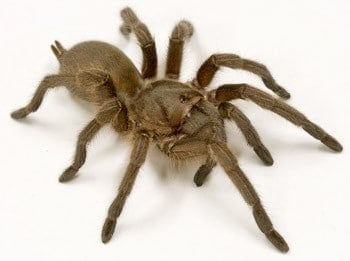Many species of insects and spiders engage in homosexual behavior, like courting, mounting, and trying to mate with members of the same sex. But it is unclear what role evolution plays in this curious situation. Like heterosexual behavior, it takes time and energy and can be dangerous – and it lacks the potential payoff of procreation.
Now Dr. Inon Scharf of Tel Aviv University’s Department of Zoology and Dr. Oliver Martin of ETH Zurich have found that homosexual behavior in bugs is probably accidental in most cases. In the rush to produce offspring, bugs do not take much time to inspect their mates’ gender, potentially leading to same-sex mating. The study, a comprehensive review of research on insects and spiders, was published in Behavioral Ecology and Sociobiology.
“Insects and spiders mate quick and dirty,” Dr. Scharf observes. “The cost of taking the time to identify the gender of mates or the cost of hesitation appears to be greater than the cost of making some mistakes.”
Friends without benefits
In birds and mammals, homosexual behavior has been shown to have evolutionary benefits. It provides “practice” for young adults and maintains alliances within groups. Scientists have recently tried to find explanations for similar behavior in insects, suggesting it could serve to prepare for heterosexual courtship, dispose of old sperm, discourage predators, and distract competitors.
But in reviewing research on some 110 species of male insects and spiders, the researchers found that the available evidence weakly supports such adaptive theories. In general there is no clear benefit to homosexual behavior in insects. The costs, on the other hand, can be considerable. Homosexual mating is at least as risky as the heterosexual kind, expending sperm, wasting time that could go toward other activities, and boosting the risk of injury, disease, and predation. In a previous study, the researchers found that all of these factors shorten the lives of heterosexually active males by an average of 25 percent. They expect homosexual behavior to be similarly costly.
And yet, in some species, up to 85 percent of males engage in homosexual behavior. The researchers say this is not because bugs directly benefit from the behavior, but because they mistake other males for females. Almost 80 percent of the cases of homosexual behavior the researchers appeared to be the result of misidentification or belated identification of gender. In some cases, males carry around the scents of females they have just mated with, sending confusing signals to other males. In other cases, males and females look so similar to one another that males cannot tell if potential mates are female until after they have mounted them.
Better unsafe than sorry
The researchers say insects and spiders probably have not evolved to be more discriminating in their mating choices because the cost of rejecting an opportunity to mate with a female is greater than that of mistakenly mating with a male. This explanation is supported by the fact that many species that exhibit homosexual behavior also mate with related species or inanimate objects, like beer bottles — indicating a general tendency toward misidentification. It is also possible that sexual enthusiasm in bugs is related to other evolutionarily beneficial traits, the researchers say.
“Homosexual behavior may be genomically linked to being more active, a better forager, or a better competitor,” says Dr. Schart. “So even though misidentifying mates isn’t a desirable trait, it’s part of a package of traits that leaves the insect better adapted overall.”
To confirm their theory, the researchers plan to study the conditions that make homosexual behavior more or less likely in bugs. They also want to look more deeply into male resistance to homosexual mating.


